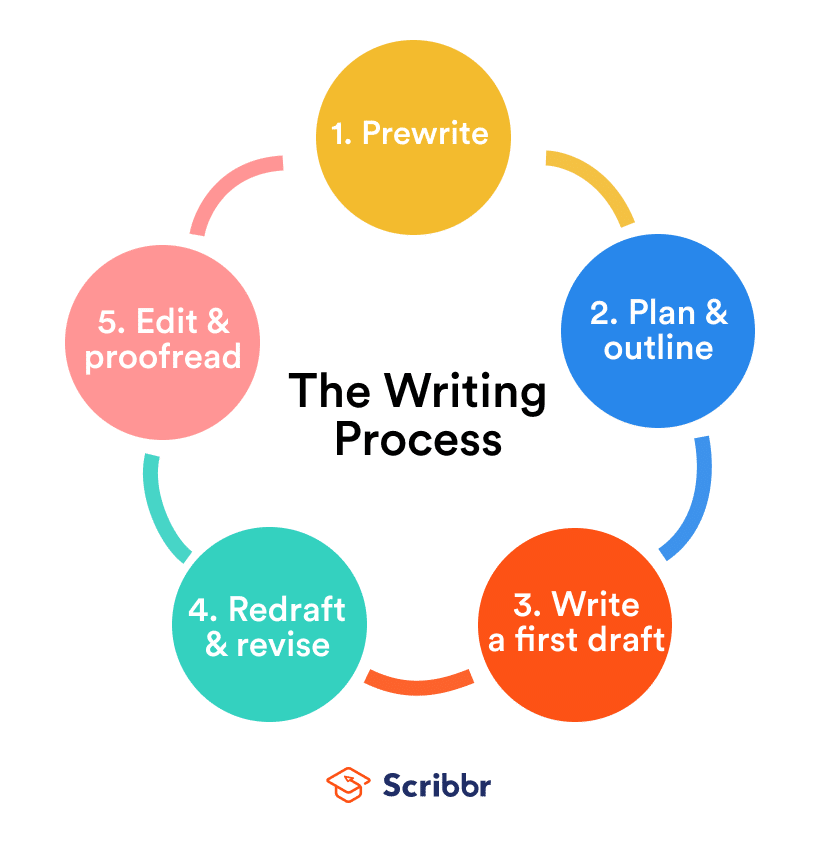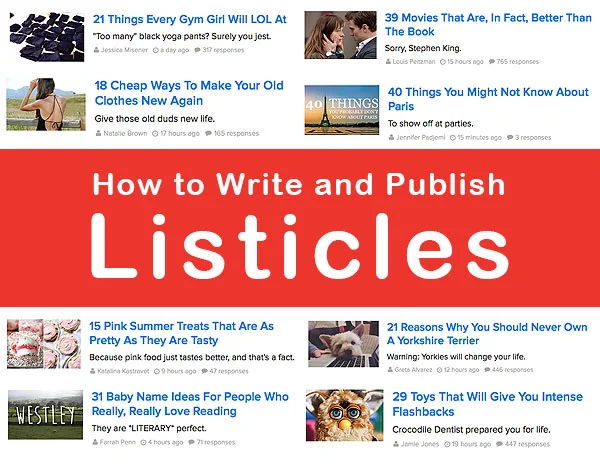Content writing is not your core business, but you have realized the importance of and want to get started in the writing of blog articles. Don’t move, you’re in the right place!
In this article, we will guide you through the 10 steps to follow for writing relevant web content. As a bonus, you will even have a list of good practices applicable immediately to optimize the SEO and the readability of your blog articles in order to boost your traffic!
1. Think about your audience
An artist never goes on stage without knowing the expectations of his audience. To write an article that will be remembered, you must first identify your audience.
To do this, analyze the most successful articles on your blog using Google Analytics. Click on “Behavior” then on “Detail by URL” to identify the articles that worked best with your audience.
Ask yourself the right questions. Who do you want to contact? What are their needs? What content works best for this audience?
These questions will allow you to identify the needs and pain points of your prospects. If you manage to respond to their problems with useful content, you will see the doors to success open.
Furthermore, when we talk about the audience, we must necessarily refer to the concept of “persona”.
This semi-fictitious character represents a standard profile of the ideal customer of your company.
It is a much more refined and personalized vision than the concept of “segments”, now outdated. It is made possible by the growing amount of data we have today.
How does it relate to our subject? Knowing your people well allows you to offer relevant content. Write your article with one of them in mind, and try to answer their questions and provide solutions to their problems.

Your readers will be satisfied, and chances are Google will notice it and value your article!
2. Select the right keyword
For your article to be seen and above all read, you must choose the right keyword so that your content is well referenced in search engines. To do this, you can use the Google Keywords Planner tool by typing your keyword in the search bar, you will get the volume of monthly searches and the level of competition of the target keyword. You can also use
SemRush or Google Trends to analyze keyword trends, compare those trends, and position yourself in the best segments.
There are different SEO analysis tools and they are for the majority of equivalent quality. Be careful, however, to always compare your data in the same tool. Indeed, the figures can vary from one software to another for the same keyword. This may affect the relevance of your analysis.
Also, note that in terms of web writing, there are two main factors in the choice of keywords:
The choice of your keywords must therefore be a subtle balance between these two concepts: finding the right balance between an important volume of research and a reasonable level of difficulty. From this perspective, the use of long drag keywords can be an interesting avenue.
3. Do your day before
To write the web article that will interest the greatest number, you must also do your day before to inspire you and find the idea that no one had ever thought of.

Today, several monitoring tools allow you to identify the most efficient content on the web and thus determine the pain points and the problems of your prospects. The WordPress plugin “easy blog ideas” is a good idea box for your watch because it allows you to find the most shared articles on social networks in your theme (on the Buzzsumo model).
4. Do not neglect the title
The title of your article is the first item your readers will see. He is also the one who will encourage them to click on your content. It must be clear, must make your audience want to know more and above all must respond to a problem. Remember, you must identify and know your audience to best meet their needs. By answering their questions, you will also build a relationship of trust with them.
Do not hesitate to contact your target directly in the title you choose. Search engines value content directly related to the request of Internet users. It is therefore essential to meet their expectations. Attracting a visitor to your site with a vague title can increase your number of visits, but it is of little interest if he leaves the page so early. In addition, if Google or one of its colleagues analyzes that visitors leave your page quickly, it will be penalized.
5. Remember to structure your web writing
If you don’t want to lose your readers, you have to structure your article. Start by writing the introductory text of your article. This should encourage readers to read more. Then write the master content of your article in several paragraphs. You can use “point bullets” or “numbered lists” to clarify and organize your ideas.
Use titles and subtitles while respecting the H1 style sheet for the title, H2 for the subtitles to cut your article as a real web editor! The more structured it is, the more readable it will be for your readership. Explicit and clearly visible titles show a clear structure. A pressed reader can read your article diagonally and quickly access the information they need.
Namely: The “lists” get the most sharing and traffic (up to 2 times more than the other types of blog posts), they are followed by the guides and the articles “how-to” (“how do we for… “). Articles with 5 lists for 500 words get 4 times more traffic and up to 2 times more sharing than articles without lists.
6. Be clear
Your prospects are looking for information that can answer their questions. If you remain evasive on the concepts they wish to master, you will hardly meet their needs. Try to bring a new idea to each paragraph you add. Be precise in justifying your comments with examples and concrete cases by relying on reliable information which will bring real added value to your content.
The clarity of your comments also goes through short and simple sentences. For this aspect, web writing is no exception, quite the contrary! For example, instead of writing “make a distinction” write rather “distinguish”. The word “believe” is also effective and lighter than the expression “has the conviction”. We sometimes try to enrich our writing, but this should not be done at the expense of fluidity.
Finally, think about making the effort to popularize the concepts you approach, especially if the subject is aimed at an uninitiated audience. We all tend to use professional jargon that our colleagues are used to hearing but which can affect the understanding of our words. So be sure to always adapt your speech to your target!
7. Insert links
By adding internal or external links in your article, not only do you provide additional information to your prospects, but you also increase your chances of classification in search engines. Internal links are also a guarantee of credibility, you show your prospects that you have written useful content that addresses their issues. The latter will then be able to find additional resources corresponding to their needs. For your part, this is a new opportunity to demonstrate your expertise.
8. Illustrate your articles

Today, people’s time is precious. The information is no longer fully absorbed but scanned. To capture the attention of your prospects, illustrate your articles with photos or videos related to your content. This will make the article air and make it more readable for your readers. It can also be used to clarify a complex concept. As Confucius said, “an image is worth a thousand words”. From there, imagine how many words a video is worth today! You can also create your own visuals using tools like Canva, PosterMyWall, or Piktochart.
Also, remember to distinguish yourself by the choice of your images. With the multitudes of images available today on the internet, it would be a shame to use one that is already widely distributed. In addition, the quality of your image is paramount, so put your team photos from another era or your vacation memories in questionable resolution in the closet.
Instead, you can use free sites such as Pixabay, or invest in paid resources like Adobe Stock or Shutterstock. If you do not master the editing of images, these resources also offer the advantage of offering images in formats suitable for a blog article or a post on social networks.
9. Be fun
If your content is to be educational, that doesn’t mean it must be boring. Web writing often allows a lighter tone than traditional writings. Do not hesitate to adopt a fun or humorous tone to get a message across, believe it or not, it will be more easily retained;). It is by being original that you will stand out from the competition, that you will retain your visitors, and above all, generate new qualified prospects. Also, try to challenge your readers with questions, it reinforces the interactive side you can’t find?
10. Insert a call-to-action (CTA) at the end of the article
Each blog article must end with a CTA inviting the reader to perform a specific action: subscribe to the blog, download an e-book, register for a webinar or an event, read a similar article, etc. This action must be aligned with the company’s marketing objectives, which aim to transform blog readers into leads. It must also be useful to the visitor: for example, a
CTA can invite the latter to discover other content, in order to obtain more information on the subject that interests him.
In terms of content marketing, the resources offered must benefit both the company and the visitor, who may become a lead, then a client.
11 – Optimizing the SEO on-page
Once the article has been written, final proofreading is necessary in order to optimize the text for search engines.
The use of keywords must remain subtle and strategic. These must be inserted naturally in the text, without affecting the user experience. Likewise, the URL can be optimized and shortened using a few clear and relevant keywords. No need to multiply the keywords or to aim for theoretical rates: the Google algorithm bypasses this type of practice.
In terms of SEO, certain elements remain essential:
- Page title and subtitles
Most blog tools use the title of the article as a page title. The title of the page has a decisive impact on SEO. According to the method developed in this article, the provisional title naturally contains keywords likely to interest the target audience. No need to write convoluted titles in the hope of faking them with keywords. It is better to favor those who naturally fit into titles and subtitles. Finally, in order to avoid these being truncated in search engines, it is recommended to limit them to 65 characters.
- Meta-description
The meta-description is displayed below the title of the page in Google’s search results. It must therefore summarize the article and stir up the curiosity of users, in order to encourage them to click. Ideally, a meta-description should be between 150 and 160 characters and start with a verb like “Discover”, “Approve” or “Read”. The Google algorithm does not take into account the keywords included in the meta-description. However, providing visitors with an overview of the content of the article, helps improve click rates.
- Anchor text
The anchor text corresponds to the text of the links to other internal or external pages. It is important to pay attention to the keywords used to link an article to other web pages, as these are taken into account by search engines.
The quality of the targeted pages must also be checked. Connecting pages targeting identical or related keywords improve the SEO of articles.
- Optimization for mobiles
Adaptive design, designed for mobile, has become essential. In addition to optimizing user experience, mobile compatibility has a significant impact on SEO
Examples of blogging articles
- Tutorial article
- Article in the form of a list
- Article with examples
- Article with SlideShare presentation
- Current affairs article
- Full guide article
- A summary article of lessons (following an experiment or a study for example)
1 – Article in the form of a list
- Example: 20 tips to increase the number of subscribers on your blog
Listed articles are very popular. The numbered subtitles allow you to divide the text into brief paragraphs, allowing the reader to quickly browse the content. According to ClearVoice, this type of article is one of the most shared types of content on social networks in 14 sectors of activity.
As in the example above, lists are a good way to provide advice and solutions to solve a problem.
2 – Article of opinion
- Example: Showcase site: why it doesn’t work
An opinion article allows the author to share his expertise on the basis of his personal experience. This type of article, sometimes written in the first person, allows companies to build lasting relationships of trust with their audience.
3 – Article of examples
The example articles are also listed, but rather than providing advice or ideas, they draw attention to real examples related to a theme. For example, the above article presents several CMS in order to know the different options before embarking on the creation of a blog.
4 – Article with SlideShare presentation
- Example: The HubSpot Customer Code
SlideShare is a tool belonging to the LinkedIn social network, which makes it possible to publish a large amount of information using presentations that are easy to share. The blog articles incorporating SlideShare thus aim to promote a presentation in a sustainable manner.
SlideShare presentations are often poorly referenced in research results. To disseminate them, it is, therefore, better to integrate them into a relevant website. Inserting a presentation in a blog article thus allows you to share dense information while promoting SEO
5 – Current affairs article
A company can take up the news of its sector of activity to attract the attention of visitors and provide them with professional advice. This type of article confirms the credibility and reliability of the company as a source of information and expertise.
In the above article, the author describes particularly strong growth companies, a subject that directly concerns the audience of the HubSpot blog.
6 – Article with infographics
Articles with computer graphics are similar to articles with SlideShare presentations in that they allow dense or complex information to be communicated effectively. They are particularly useful for presenting statistics in a clear and visual manner. In fact, infographics attract the eye, intrigue visitors, and promote the memorization of content.
7 – Tutorial article
- Example: How to write a blog article
This article is a tutorial designed to help the reader solve a problem. These may be simple instructions or a full guide allowing visitors to learn about the subject. These articles are particularly useful for informing potential leads and preparing them to use the company’s services.
8 – Full guide article
This type of article, often greater than 1,500 words, offers a lot of information on a vast subject (in this example, blogging). Unlike the more specific articles, the guides tackle many themes which are part of the broader subject, from strategy to operational implementation.
They naturally require more editorial work and are aimed at an audience already familiar with the subject developed.
9 – Summary article of lessons
It is common for a company to share its expertise via summary articles. They can be written for example to share the key lessons of:
- An A / B test,
- An experience,
- A study,
- Participation in a conference.
These articles bring a lot of added value to readers and readers because they are based on concrete data.




